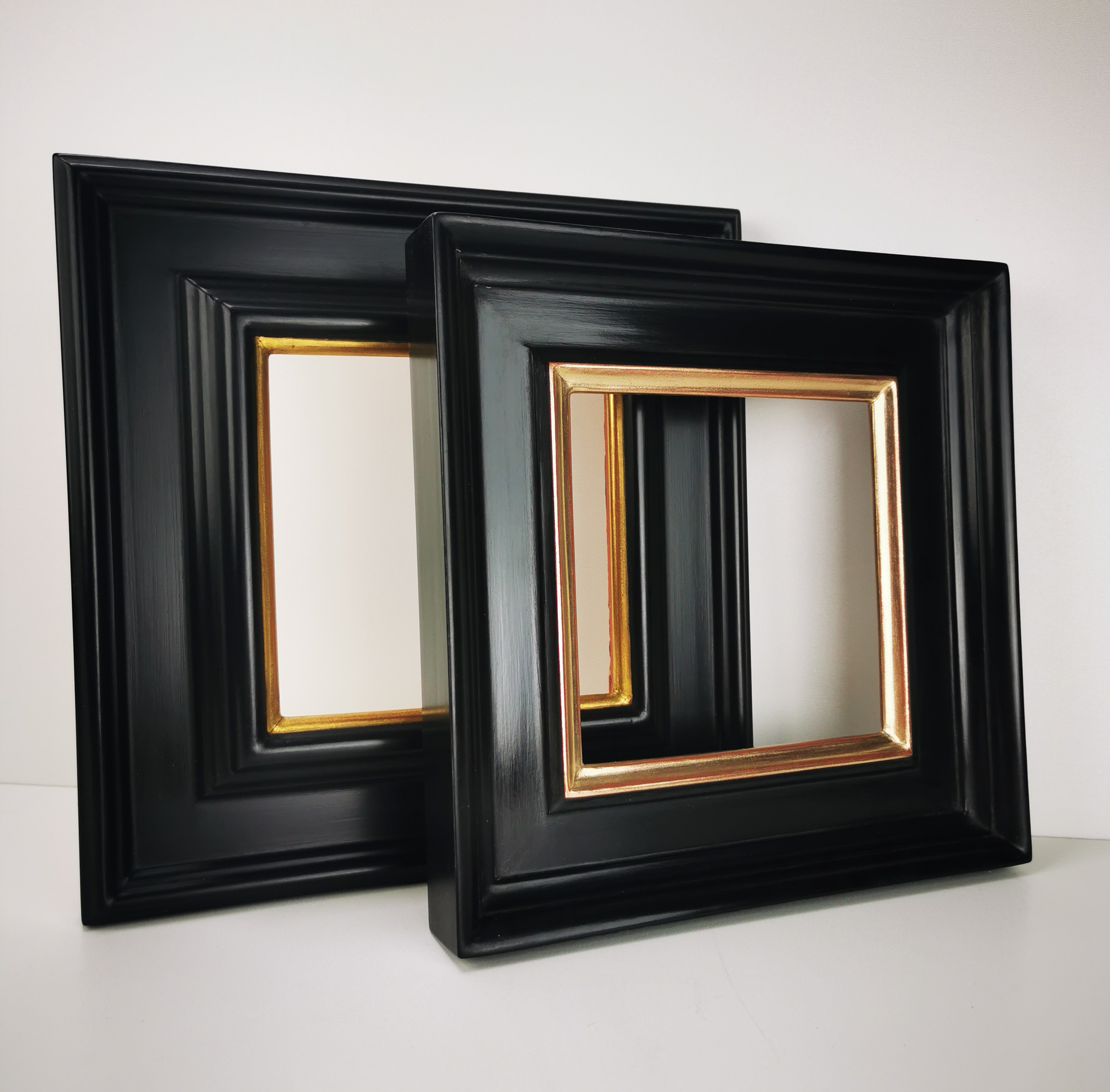
Reverse Frame and Coved Frame – How Do They Affect the Perception of Artwork?
A frame is not just a protective border for a painting – its shape and profile can dramatically alter how the artwork is viewed. Among the most distinctive frame types are the Reverse Frame and the Coved Frame, each offering a unique way to enhance an artwork’s composition and depth. In this article, we will explore their characteristics and how they can be used to complement different styles of paintings.
Reverse Frame – Creating Depth by Receding the Artwork
What is a Reverse Frame?
A Reverse Frame is designed with a higher outer edge and a lower inner edge, creating the illusion that the artwork is recessed into the frame. This effect adds depth and a sense of spatial perspective, making the artwork appear further back within its surroundings.
Applications of the Reverse Frame in Art
- Enhancing depth and perspective – The Reverse Frame can strengthen the illusion of space, particularly in landscapes and compositions with strong foreground and background contrasts.
- Modern and minimalist aesthetics – Its clean, simple design makes it an excellent choice for contemporary interiors and modern art.
- Ideal for textured artworks – Paintings with thick layers of oil paint, impasto, or relief elements benefit from a Reverse Frame, as it does not overshadow the painting’s texture.
- Use in religious and iconographic art – The frame’s recessed effect resembles a window into another world, making it a popular choice for icons and sacred paintings.
Coved Frame – Elevating the Artwork for a Striking Presence
What is a Coved Frame?
A Coved Frame features a higher inner edge and a lower outer edge, creating a concave profile that visually pushes the artwork forward. This effect enhances the artwork’s prominence and draws the viewer’s attention to its focal point.
Applications of the Coved Frame in Art
- Highlighting central composition – By bringing the artwork forward, a Coved Frame naturally directs the viewer’s gaze towards its centre.
- Elegant and classical appearance – Used since the Renaissance, this frame style is ideal for traditional portraits, landscapes, and historical scenes.
- Seamless transition between the artwork and its surroundings – The concave profile gently guides the eye towards the painting, offering a refined and understated presentation.
- Enhancing light and depth – Due to its curved surface, a Coved Frame can subtly reflect light, adding a sense of radiance and dimension to the artwork.
How to Choose the Right Frame?
Reverse Frame
- Perfect for artworks that require depth and perspective.
- Suitable for modern, sacred, and highly textured paintings.
- Complements minimalist interiors and contemporary compositions.
Coved Frame
- Provides a classic and elegant look.
- Enhances central composition and focal points.
- An excellent choice for portraits, landscapes, and historical artwork.
Conclusion
Both Reverse Frame and Coved Frame offer distinct ways to present artwork – one draws the piece inward, adding depth, while the other elevates it for greater impact. Choosing the right frame depends on the painting’s character, the desired visual effect, and the setting in which it will be displayed.
In my store, you’ll find handcrafted frames in both styles, custom-made to suit your unique artistic needs. If you're unsure which frame will best complement your painting, I’ll be happy to help.
Got questions about frame selection? Get in touch, and I’ll help you find the perfect solution for your artwork!